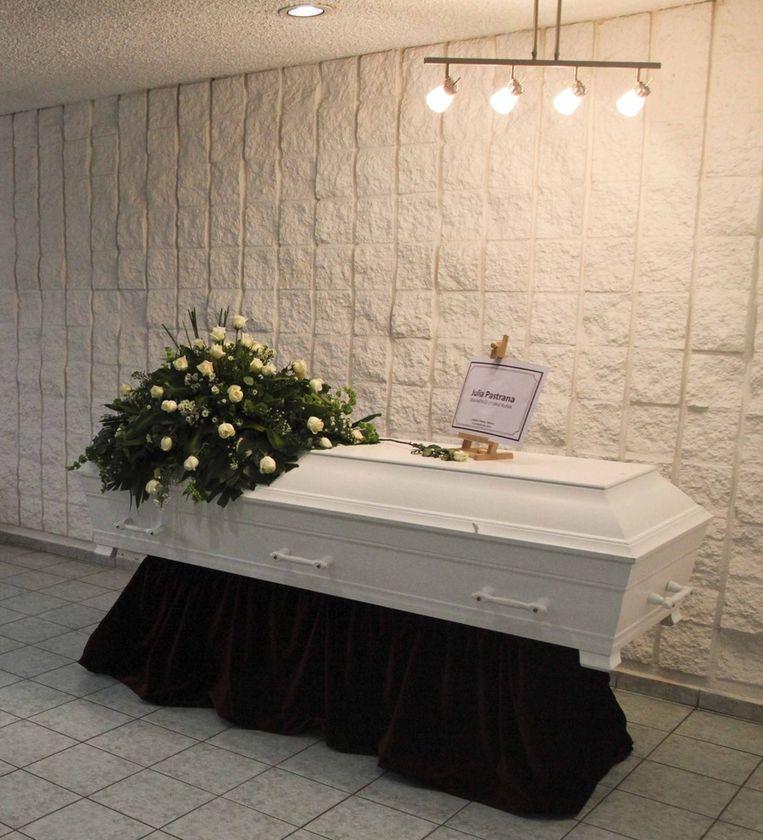Julia Pastrana, ‘ugliest woman’ who had over 20 marriage proposals

‘The ugliest woman in the world’, Julia Pastrana, was a 19th-century artist and singer. She was suffering from hypertrichosis, rare genetic disease. The Mexican and her son, who had a hideous appearance due to two rare diseases, died far from home, in Russia, in 1860.
Julia Pastrana was born in 1834 and suffered from two very rare illnesses, one that made her whole body thickly hairy and one that made her lips and gums swell. She was bought at the age of 20 by a man who made her perform in the U.S. and Canada.
The performances were successful, and Pastrana married her impresario in New York. She died in Moscow after giving birth to a baby that was also hairy. The baby died after 3 days.
Julia Pastrana genetic disease
Pastrana, an indigenous woman from Mexico, was born in 1834, somewhere in the state of Sinaloa. She suffered from a genetic disease, terminal hypertrichosis (or generalized hypertrichosis lanuginosa; her face and body were covered with hair, and that made her seem to be the ‘ugliest woman in the world’.

Her ears and nose were abnormally large, and her teeth were irregular. This condition was caused by a rare, undiagnosed disease during her lifetime, gum hyperplasia, which thickened her lips and gums.
Julia’s life and career
There are several versions of Julia Pastrana’s life. Literature produced by those who ran the monster shows in which she appeared to describe her as belonging to an Amerindian tribe called the “Root Diggers” whose inhabitants were like monkeys and lived in caves.
According to this version, a woman identified as Ms. Espinosa was kidnapped by the tribe and held in a cave and took Pastrana with her when she was able to escape. In another version, based on the words of the indigenous villagers of Ocoroni, Mexico, Pastrana was a local girl known as the “wolf-woman”.

In the second story, Pastrana lived with her mother until her mother died, after which her uncle sold her to the circus. Both accounts state that at one time she lived in the house of Pedro Sanchez, the Governor of Sinaloa at the time, and left the house in 1854.
According to Ireneo Paz, Francisco Sepúlveda, a customs officer from Mazatlán, bought Julia Pastrana and took her to the United States. At first, Pastrana performed under J.W. Beach. Still, in 1854 she ran away with Theodore Lent, whom she married in Baltimore, Maryland.
Mr. Lent became her new manager, and they toured the United States and Europe. Her singing and dancing skills brought her to the top of her career.
Pastrana’s son
During a tour of Moscow, Ugliest woman gave birth to a son with characteristics similar to hers. The child only survived three days, and Julia died of postpartum complications after five days of giving birth.
Medical examinations
In the course of her life, Pastrana’s managers gave her tests. A doctor, Alexander B. Mott, certified that she was specifically the result of the mating of a human and an Orangutan. Another medical partitioner, Dr. S. Brainerd of Cleveland, stated that she was of a “distinct species”.
Francis Buckland stated that she was “just a deformed Mexican Indian. Samuel Kneeland, Jr., a comparative anatomist with the Boston Society of Natural History, said that she was human and of Indian origin.
Death of Julia Pastrana
After Pastrana’s death, her husband, Lent, sold her and their son’s body to Professor Sukolov of Moscow University, who kept them permanently. Her body was preserved by taxidermy, a process that combines taxidermy techniques with embalming chemicals.
Marie Bartel to Zenora Pastrana
After the bodies were preserved by Sukolov, Mr. Lent bought them from him and began exhibiting them throughout Europe. Mr. Lent then found another woman with similar features, married her, and changed her name from Marie Bartel to Zenora Pastrana, enriching himself through her exhibition. Sources say he was finally committed to a Russian psychiatric institution in 1884, where he died.
Julia Pastrana’s body returned to Mexico
For more than a hundred years, the bodies of Pastrana and her son have been exhibited around the world in museums, circuses, and amusement parks. They appeared in Norway in 1921 and toured the United States until 1972. Later that same year, a tour of Sweden aroused considerable public opposition.

In February 2013, with the help of the Governor of the State of Sinaloa, Mario López Valdez, New York-based visual artist Laura Anderson Barbata, Norwegian authorities, and others, the body was handed over to the government of Sinaloa, and she was finally buried.




